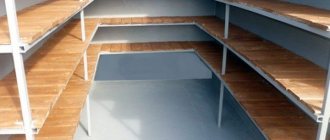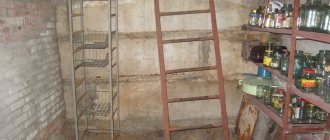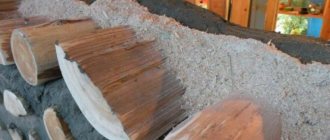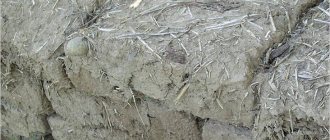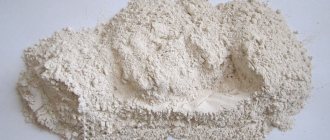A cellar made of concrete rings has a number of advantages, among which are the simplicity and high quality of the design, as well as ease of operation. In addition, if necessary, you can quickly repair part of the structure (for example, using a concrete mixture).
However, this building material has its drawbacks compared to plastic structures for cellars. First of all, it is a lot of weight. To lower such a ring into the pit you will need a special lift. In addition, the structure will still have one or two (depending on the depth of the cellar) connecting seams, which will have to be insulated.
It should be noted that a concrete cellar in any case will be several times cheaper than a traditional plastic caisson. Therefore, this construction option takes place and is popular.
When considering concrete rings as a common structural element, it is necessary to understand that not all rings are the same, and they may have slight differences, which, however, are noticeable only to professionals. It is customary to distinguish between two types of concrete rings:
- With locking connection. In this case, the upper part is equipped with special protrusions, and the lower part is equipped with recesses. In other words, when the rings are mounted on top of each other, they are securely connected and cannot be separated during operation. Even with strong ground movement, the rings cannot move relative to each other.
- Standard rings. During installation, mortar and metal brackets are used. The reliability of the fastening in this case raises certain doubts, because even metal brackets can bend over time under the influence of soil (this will happen even earlier if the structure is not properly waterproofed).
Rings with a locking type of connection (left) and ordinary ones (right).
Material advantages
If you decide to build a cellar from rings made of concrete, then you probably noticed the following advantages of these structural elements:
- Strength. The products are quite durable. They can easily withstand the effects of groundwater, soil pressure and possible seasonal soil movements.
- Durability. The service life of a cellar made of concrete rings under normal conditions exceeds 20 years. By and large, the operation of any cellars that are more than 20 years old is no longer recommended.
- Frost resistance. Such a concrete cellar can be made at any depth, regardless of the level of soil freezing. By installing a high-quality waterproofing layer, your food and provisions will never freeze in such a cellar.
- Chemical resistance. In this case, great attention should also be paid to high-quality insulation.
The diameter of the concrete rings currently on the market varies quite a bit.
Different sizes.
You can find options with a diameter from 50 to 200 cm. For many years, rings with a diameter of 100 cm have been considered the most common. But if the products are purchased for a cellar, then you need to consider an option with a larger diameter.
Diameter is the main characteristic when choosing.
Ventilation
In order for supplies to be well stored, ventilation must be organized in the cellar. With active air movement, the humidity inside is naturally regulated. There are two ways to organize ventilation in the cellar:
- With two pipes located at different heights - supply and exhaust.
- With one pipe - supply and exhaust.
Methods of cellar ventilation
In order for ventilation to function normally, two pipes are needed - supply and exhaust. They are placed in opposite corners of the room, positioned diagonally. The supply pipe starts at a distance of 40-50 cm from the cellar floor. It can be brought out through the wall or up to the level of the roof (cover). The exhaust pipe should remove as much exhaust air as possible, so it starts almost at the ceiling - 10-15 cm lower. It is displayed straight up, rising at least a meter above the roof (lid). To prevent leaves from getting into the pipes, they are covered with mesh, umbrellas are put on, and a deflector can be placed on the exhaust pipe to improve draft.
How does this ventilation work? Due to the difference in temperature, pressure and wind force. The autumn-winter period is warmer in the cellar than outside. Plus, due to the fact that the exhaust pipe is raised above the roof, a pressure difference is created. These reasons cause warm air from under the ceiling to rush up through the pipe. In place of the removed part of the air, fresh air enters the cellar through the supply pipe. This process occurs constantly at varying speeds. Sometimes in winter it is too active, and you have to reduce the cross-section of the ventilation pipes. To do this, you can install a damper like a damper or a stove view, but usually they do it simpler - they close the pipe from above with some kind of plate, partially blocking its lumen.
In small cellars located on a hill, you can get by with one pipe. In this case, the air is alternately drawn out and then supplied.
Flaws
Despite many positive aspects, the use of concrete rings for creating a cellar also has many disadvantages:
- Serious mass. Often the weight of one ring exceeds 150-200 kg, so certain problems arise with delivery. In addition, this results in increased installation costs.
- Fragility. If the load is applied unevenly, the structure may crack.
- The need to create high-quality thermal insulation and waterproofing layers.
It is also often said that concrete rings made using the wrong technology cause some harm to the soil. But this issue is quite controversial, so experts are in no hurry to write this down as a disadvantage.
Cellar construction
If you recently purchased a country house and there is not even a small cellar on the plot or in the underground, and the harvest is ripening in the beds, then you need to think about where the gifts of nature will be stored throughout the winter season. The optimal and simplest solution seems to be a cellar, which can be made using concrete rings.
An alternative scheme for building a cellar - concrete rings are positioned horizontally.
Of course, many people prefer modern materials (for example, plastic), but for some reasons, building such a cellar on the site may not be possible.
A cellar made of reinforced concrete rings is considered a fairly simple structure, the creation of which does not imply any complex work that requires special knowledge or tools. By and large, anyone can do this job. But, of course, it will be extremely difficult to do everything alone.
Unlike the construction of standard earthen cellars, where it is necessary to additionally strengthen the ceiling and walls, create a complex and effective waterproofing layer, etc., in the case of a cellar made of concrete rings, you only need to dig a large hole and stack structural elements in it on top of each other . By the way, you can dig a hole yourself or with the help of special drilling equipment (it all depends on the capabilities of the country homeowner).
If you need a small cellar in which you plan to store crops, for example, from only one dacha, then there is no need to make a large storage facility. It will be enough to install one concrete ring (or at least two), and this will be enough for you.
How to make a cover (hatch)
As for the lid, it is made from any materials that seem appropriate. Of course, the lid should fit as tightly as possible to the ring. It should also be properly insulated. It also doesn’t hurt to use waterproofing, which in the simplest case is a layer of roofing material that is simply nailed on top of the lid in two overlapping layers.
A hatch is made in the lid, large enough to make the cellar convenient to use. Install a small wooden or metal ladder. It is better to secure the ladder at the bottom and top to ensure maximum safety.
Work order
The concrete rings that will be used are usually used for the construction of sewer systems, septic tanks, and artificial reservoirs. They can be purchased at almost any construction warehouse in the city. As a last resort, online orders are now available.
Excavation of a hole.The first step is to dig a hole of the required depth and diameter. It must be taken into account that the diameter of the pit should slightly exceed the diameter of the concrete ring, because it is necessary to lay structural elements into it without applying additional force. Later, these voids are filled with soil mixed with stone (fragments of bricks are usually used), which allows the rings to be firmly fixed in the ground. Of course, you can use cement mortar.
Pillow made of sand and crushed stone.As soon as the pit is ready, it is necessary to properly prepare the bottom of the future cellar from the rings. To do this, a cushion is made of sand and crushed stone. Sand and crushed stone must be thoroughly compacted so that later there will be no difficulties with pouring the concrete solution. Recently, more and more often, instead of pouring mortar, a cement-sand screed is made. With this approach (even under the influence of groundwater), moisture will not accumulate at the bottom of the cellar.
Descent into the pit.As soon as the pit and the bottom of the future cellar are ready, the concrete rings are lowered. Of course, you can simply throw the rings down, thereby avoiding the cost of equipment. But there is a high probability that the concrete rings will be damaged if they fall. It is best to hire special equipment - a lift, which will not only easily move concrete rings around the site, but also lower it to the required depth.
In principle, you don’t have to hire a lift if you have a lot of helpers. One of the tricky ways to lower rings into a hole: first of all, the ring is installed, after which they begin to dig into it. Gradually, the soil will begin to be knocked out from under the walls of the ring, and it will begin to sink lower and lower until it completely sinks into the hole. This approach is an exception rather than an alternative. Its use is illogical and irrational for many reasons. But, if you do all the work alone, then this option seems to be the only possible one.
The video below shows a great example of what not to do.
Peculiarities
A cellar made of ring reinforced concrete elements has a number of undeniable advantages, among which the following points stand out:
- Simplicity of design, the manufacture of which can be carried out by a summer resident who is not familiar with the specifics of construction work.
- Ease of use, thanks to which it is possible to quickly remove and replenish reserves.
- Maintainability, allowing, if necessary, to restore part of the structure using concrete mortar.
- The absence of the negative impact of elevated temperature and direct sunlight on food products, which ensures the necessary shelf life of the preservation and the safety of agricultural products.
- Low costs for construction work, which are affordable to the majority of summer residents with average incomes.
The only drawback of this design is the significant mass of the rings, which require a special lift to immerse.
Cellar insulation
When making a cellar from reinforced concrete rings, in no case should you forget about waterproofing the seams of the structure (of course, if the cellar was made not from one, but from several rings). Simple waterproofing in this case will not be enough, because it will not provide adequate protection. That is why experts recommend making special waterproofing using suitable compounds.
It is very important to insulate all concrete, because the entire structure will be exposed to biological effects and the influence of groundwater/overwater.
In addition, over time, even rings can be destroyed under the influence of unfavorable factors. This process is commonly called concrete corrosion. If it is neglected, then no one will be able to guarantee at least some durability of the cellar. The food storage needs to be protected on two sides:
Mastic for waterproofing.
- To install external waterproofing, you simply need roofing material or a special mastic that is suitable for this work. It is recommended to consult a specialist about the choice of one or another mastic.
- To create external waterproofing, so-called liquid glass or again the same mastic is used.
After the work on installing the rings and their insulation is completed, it is necessary to fill all the voids with soil (or fill them with concrete), then check the tightness of the connections and begin to work on the internal arrangement of the concrete cellar.
Waterproofing
To ensure the longevity of the cellar, protection from moisture is provided, since concrete is susceptible to corrosive processes. The following is used as protection:
- Internal waterproofing. After installing the rings, a cement-sand mortar is applied along the joints, which prevents water from entering the storage facility.
- External waterproofing. They use roll, film and liquid moisture protection products. These products are used to treat the outer side of the rings, protecting the concrete from the destructive effects of water.
Interior arrangement
Inside the cellar you can do everything the way the owner wants. However, in cellars made of concrete rings, the situation is very difficult with shelves, which must be mounted on a rounded surface.
An obvious solution is also an extension ladder, which can be welded to the top of the cellar or taken, for example, from the barn if necessary. In this case, the safety of descent and ascent into the cellar is quite low.
Bolted ladder.
It is recommended to make the cellar lid as airtight as possible. It is also advisable to finish it with hydro- and heat-insulating materials. If this is not possible, then you can use durable boards covered with roofing felt. In addition, it is necessary to provide a hole in the lid that will provide ventilation to the room.
An excellent solution would be to install a separate pipe responsible for fresh ventilation. Vegetables in such a cellar can be stored throughout the year. Periodically it is necessary to monitor the presence of condensation on the walls and inside of the lid. To provide protection from precipitation, a small house with a pitched roof can be installed above the cellar. In addition, it is recommended to cover the top of the cellar not only with a lid, but also with a sheet of roofing material (in extreme cases, straw).
DIY basement floor
When the room is already covered, you can begin interior decoration. The floor in a storage facility is not only a base, but also a waterproofing barrier, so its design is selected based on ground conditions.
If the soil is dry and dense, you can get by with crushed stone-sand backfill or a simple earthen floor. In other cases, the following are used for coating:
- concrete;
- stone;
- brick;
- tree;
- clay.
In the cellar where food supplies are stored, the floors should not only be smooth and durable, but also safe, easy to clean, and hygienic.
Zemlyanoy
This is the simplest option, which does not require any material costs. The ground is leveled, hummocks are cut off, the surface is covered with crushed stone, gravel, and sand.
Despite the availability of earthen floors, they are not the most practical; they will not be able to protect against possible leaks during seasonal rains or melting snow. They can only be used at higher elevations on dry, non-moisture-intensive soils.
Concrete
Such floors are strong and durable, easy to care for and disinfect. The concrete base consists of several layers:
- compacted crushed stone-sand cushion 50-100 mm thick;
- filling with bitumen or double layer of roofing material;
- reinforcing mesh;
concrete 50-100 mm thick; finishing coating.
Concrete floors can be insulated with polystyrene foam or expanded polystyrene, which are not afraid of moisture and do not rot. Thermal insulation is laid directly on the crushed stone-sand cushion on the ground, and concrete is poured on top. This base does not freeze and protects the room well from soil moisture.
Brick or stone
The material for the cellar floor should not be afraid of contact with the ground. Clay bricks meet this condition; silicate bricks become moldy and quickly collapse. In addition to being resistant to moisture, red brick has low thermal conductivity and protects floors from freezing. In areas where natural stone is mined, it is rational to use this available material.
The procedure for installing brick floors:
- Filling with sand and gravel mixture, compaction.
- Filling with bitumen or liquid clay.
- Laying double roll waterproofing.
- Brick or stone masonry with cement-sand or clay mortar with filling of joints or dry.
Such floors are very strong and durable and do not require decorative finishing.
Wood
Wooden floors can be used on dry soils. Timbers treated to prevent rot are laid on a base of crushed stone or pebbles, and boards with a thickness of at least 40 mm are attached to them.
For strong fixation, each connection must have at least 2 nails or screws. It is better to use galvanized fasteners.
Clay
The traditional material for waterproofing is fatty clay. When soaked it is elastic, and when hardened it is very durable. To reduce cracking, sand is added to the clay solution.
The base of the floor is a mixture of crushed stone with bitumen or liquid clay 100-150 mm thick. Rolled waterproofing is laid on top with an overlap onto the basement walls. Now you can pour the clay in its pure form or by mixing it with crushed stone. After hardening, the cracks are filled with mortar.
When is construction with concrete rings justified?
A cellar made of ready-made reinforced concrete rings becomes an excellent alternative for all those who, for certain reasons, cannot make a cellar in the underground of the house and do not want to engage in labor-intensive work on constructing a traditional storage facility.
- A cellar made of cast concrete rings is a good solution for all those who live permanently in their country house, but do not have underground storage. The construction of a traditional cellar is quite complex - it is necessary to follow certain rules and regulations for thermal insulation and waterproofing of the structure.
- Despite this, it is also recommended to trust the installation of cellars made of reinforced concrete rings to professionals who have special equipment for transporting and installing rings into the pit. It is very difficult to handle this with your own hands.
- This is an excellent option for all those who grow a few vegetables and do not need to build a large cellar. If everything is done correctly, including in terms of ventilation, then food in the cellar can be stored all year round. It is important to monitor the temperature. It is noted that the optimal temperature regime for cellars with vegetables is +2, +4 degrees. In winter, the temperature may drop slightly, and in summer it may rise; if the increase or decrease is insignificant, then it’s okay.
- If possible, the ideal solution seems to be the purchase of a plastic cellar, which also fits in the pit. No additional insulation is required, but this option still has a number of disadvantages. For example, many people complain about a specific smell.
Pros and cons of construction
If we talk about the advantages, we will highlight:
- Easy to install. To do this, you don’t need to be a builder and study the requirements.
- Possibility of increasing the cellar. If at any point you decide that the structure could be deeper, you won’t have to dismantle it. Sections can be added to an existing structure.
- Ease of use. Essentially, this is a reinforced pit with a ladder into which supplies are stored.
- Resistant to sunlight and temperature changes. In addition, reinforced concrete is resistant to aggressive environments and chemicals.
- Durability of the material (rings do not collapse for 20-30 years). Reinforced concrete is the most affordable option. The cellar will not require repairs for a long time.
It is worth noting the negative aspects of reinforced concrete structures. First of all, these rings are very heavy. They simply cannot be delivered and installed in the right place. This means you will have to pay for the services of lifting equipment or come up with a mechanism based on a winch.
The second disadvantage is the lack of variety of forms. This means that if you are a designer at heart, then you won’t go anywhere with faceless round shapes. On the other hand, if we are talking about an underground cellar of the simplest type, then the interior decoration should not be particularly concerning.
But no matter how simple this design is, it has its own characteristics that are worth paying attention to.
